From the courtyard on Canyon Road in Santa Fe, I spied a painting that carried me back to Cádiz, Spain, decades earlier.
I was walking the quiet streets of Cádiz alone on a Sunday morning. I loved traveling alone in those days—the chance to have time to myself and to really get to know a place. What I wasn’t expecting was to be invited, however silently, into a local tradition.
I had wandered into a small church plaza, pastel-colored buildings pressing close around it. At first, I could barely hear the music as I approached—faint because the performers were just beginning, and contained by the walls that seemed to hold the sound inside. Then I stepped in and found myself amid the Fiesta de Barrio Fermín Salvochea—a neighborhood celebration not meant for tourists, but for the community itself.
Girls in polka-dotted traje de gitana dresses, ribbons and flowers in their hair, sang and danced in groups while mothers adjusted sashes and men strummed guitars. I was entranced, privileged to have stumbled into something so intimate—where generations gathered not for an audience, but for each other. The locals invited me along and I was welcome to watch, but they weren’t talking to me or inviting me to dance. This was for them.
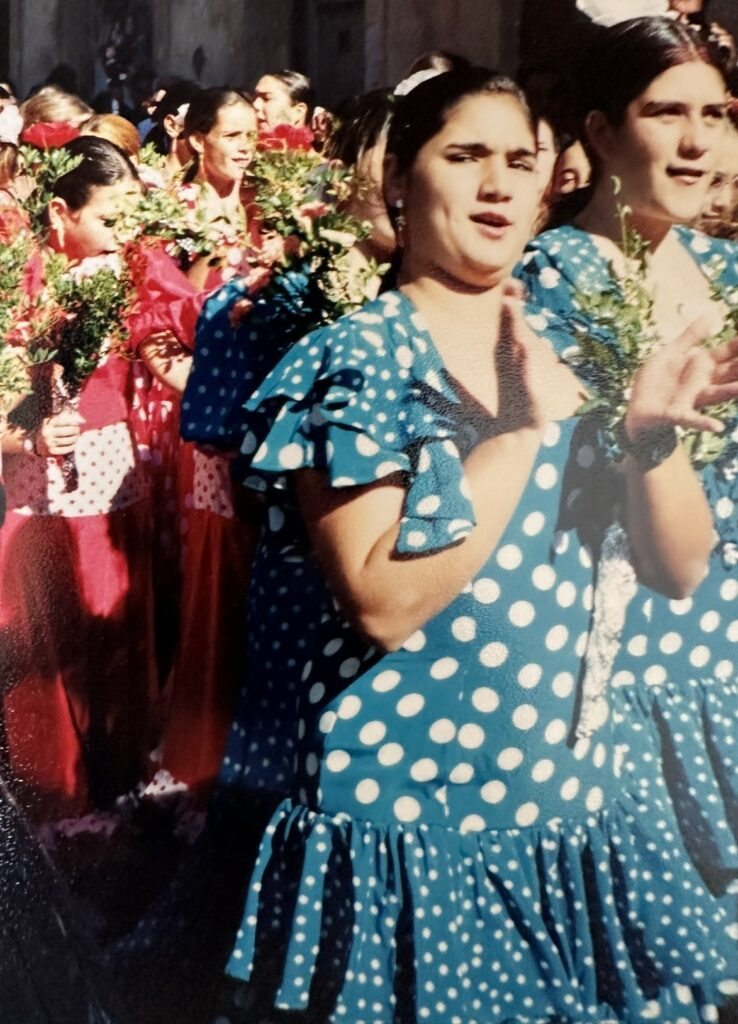
When the dancers assembled to leave in parade fashion, several adults beckoned me to follow. It wasn’t over. With clapping, laughter, and music growing louder, the procession wound toward a larger church plaza. Other processions converged there, and the performances began in earnest. The girls and young women danced in turn while older generations stood around the plaza, cheering. Then women joined in—singing, clapping, and stepping into the dance. I felt enveloped by the joy, the beauty, and the richness of it all—not a voyeur, but an invited guest with a front-row seat at this deeply rooted and exuberant celebration.
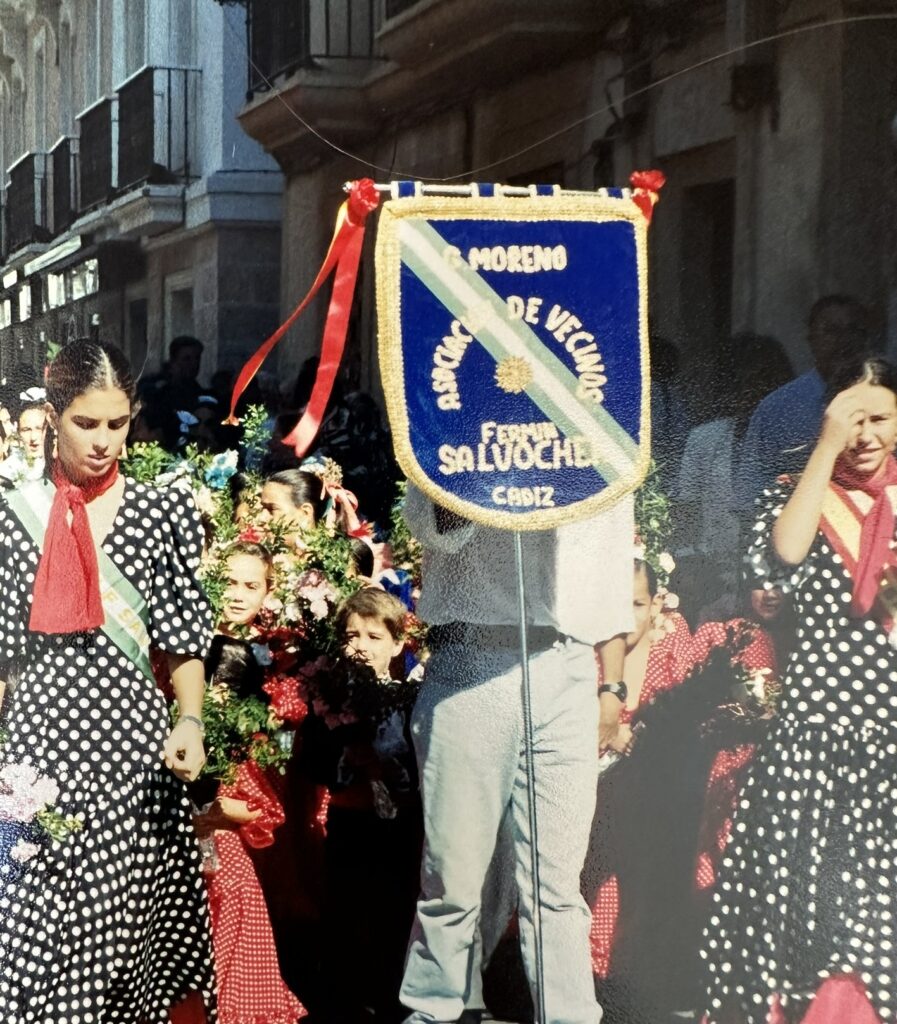
Back in Santa Fe, Carole Belliveau’s paintings, first glimpsed from the courtyard of the Underwood Gallery, held that same spirit: girls spinning, dresses floating, ribbons flying. One Degas-like canvas showed a girl in a richly adorned white dress, luminously captured mid-twirl. I was transfixed, transported, as if the guitars and voices were in the room with me again.
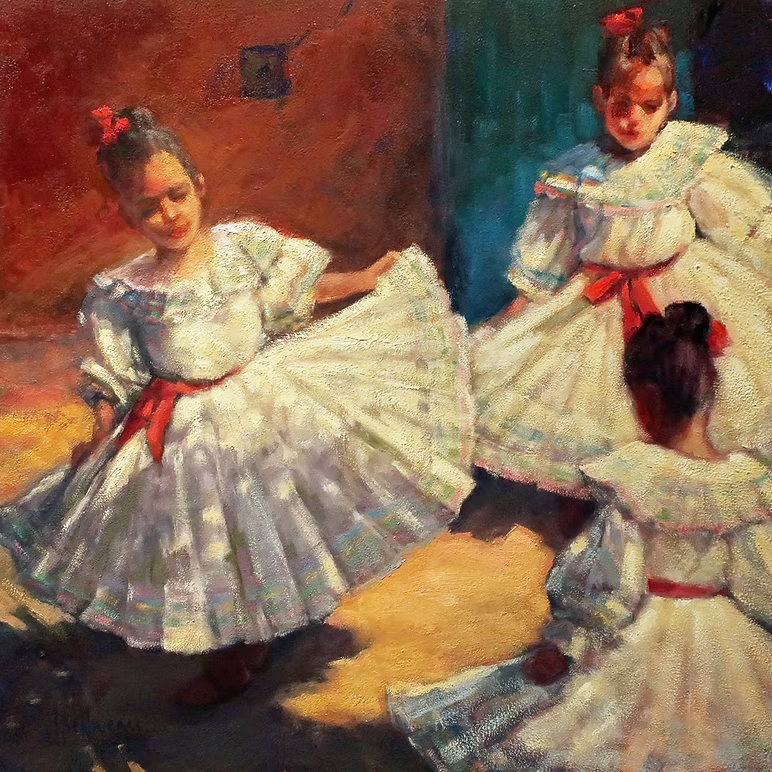
The gallerist explained that these dancers were part of New Mexico’s Hispano community—descendants of Spanish settlers who arrived in the Upper Rio Grande valley in the late 1500s. Over four centuries, they shaped a culture distinct from both Mexico and Spain, blending Spanish, Indigenous, and mestizo traditions. Cut off from central Mexico for generations, they preserved old-world rituals while interweaving local languages, crafts, and celebrations. Faith, family, and festivity remained at their center—threads that still bind the community today.
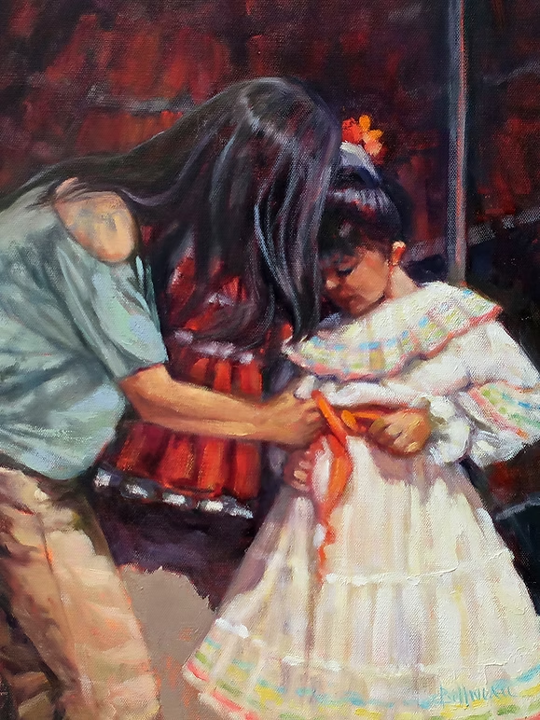
Another of Belliveau’s works, Red Ribbon, captured that same devotion: the mother, the ribbon, the patience, the love passed between generations.
I realized these paintings weren’t just preserving movement—they were preserving memory. Another act of community, keeping tradition alive through art.
At a wedding the next day, I was again a guest—this time invited into a community rather than stumbling upon one. The hostess’s ruffled red dress stopped me in my tracks. I told her what it brought to mind—the parades, the paintings, the music, the joy. As we talked about flamenco, I realized this was the circle completed: Cádiz, Canyon Road, and now this celebration, stitched together in the fullness of her skirt and the warmth of being welcomed in.
In Spain, I’d been given a front-row seat to a fiesta de barrio, the air alive with ruffled traje de gitana dresses and flamenco rhythms. In Santa Fe, I discovered its echo in luminous oil paintings—New Mexico’s fiesta, carried forward through ballet folklórico. And at the wedding, I stood face-to-face with a woman whose elegant contemporary red dress drew from both traditions. Different continents, different eras, yet the same devotion woven into ruffles, music, and dance—traditions rich with meaning, respect, and beauty. They endure because they evolve, finding new forms to meet the hearts and hands of the people who keep them alive.

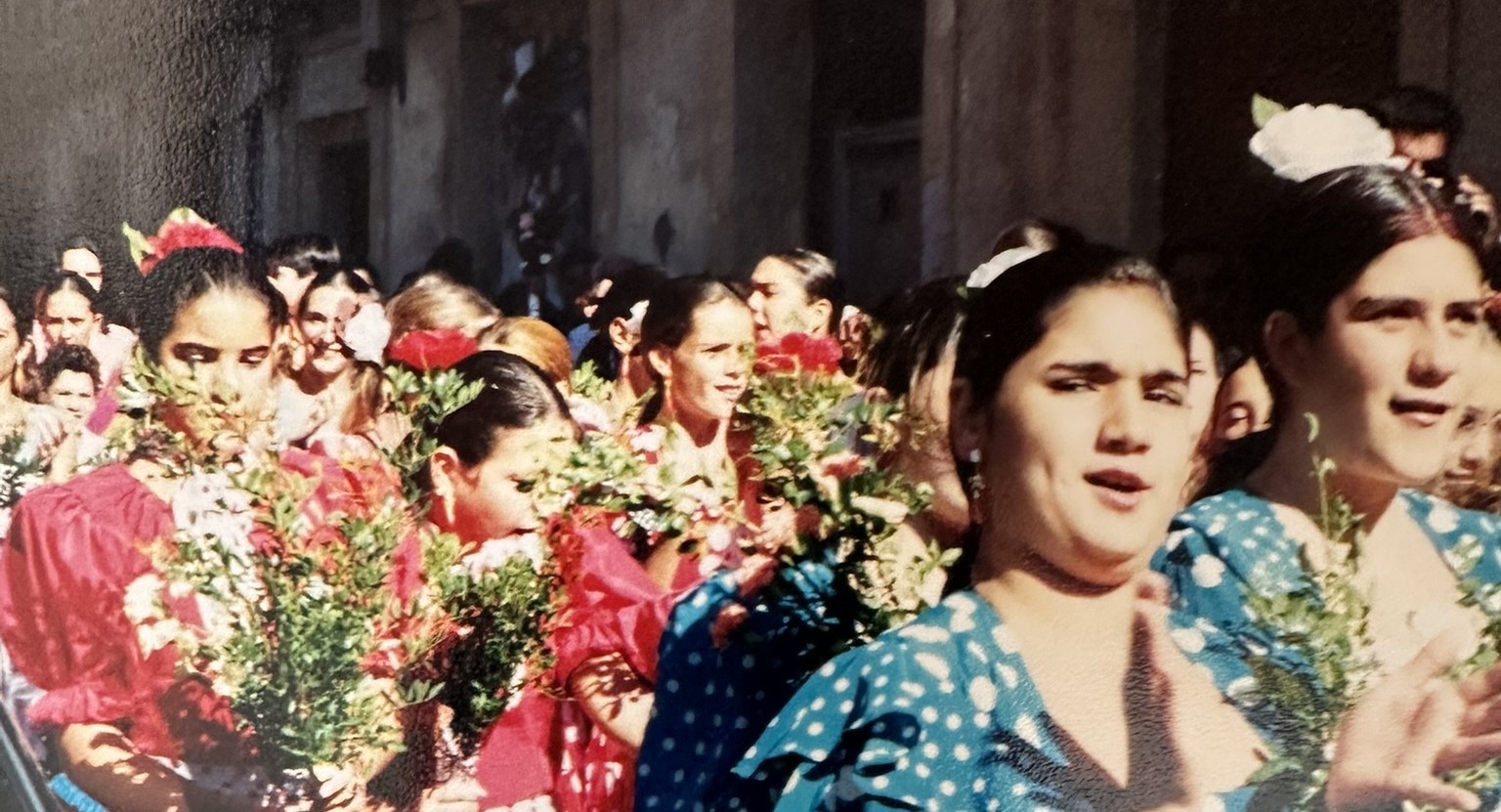
Comments are closed